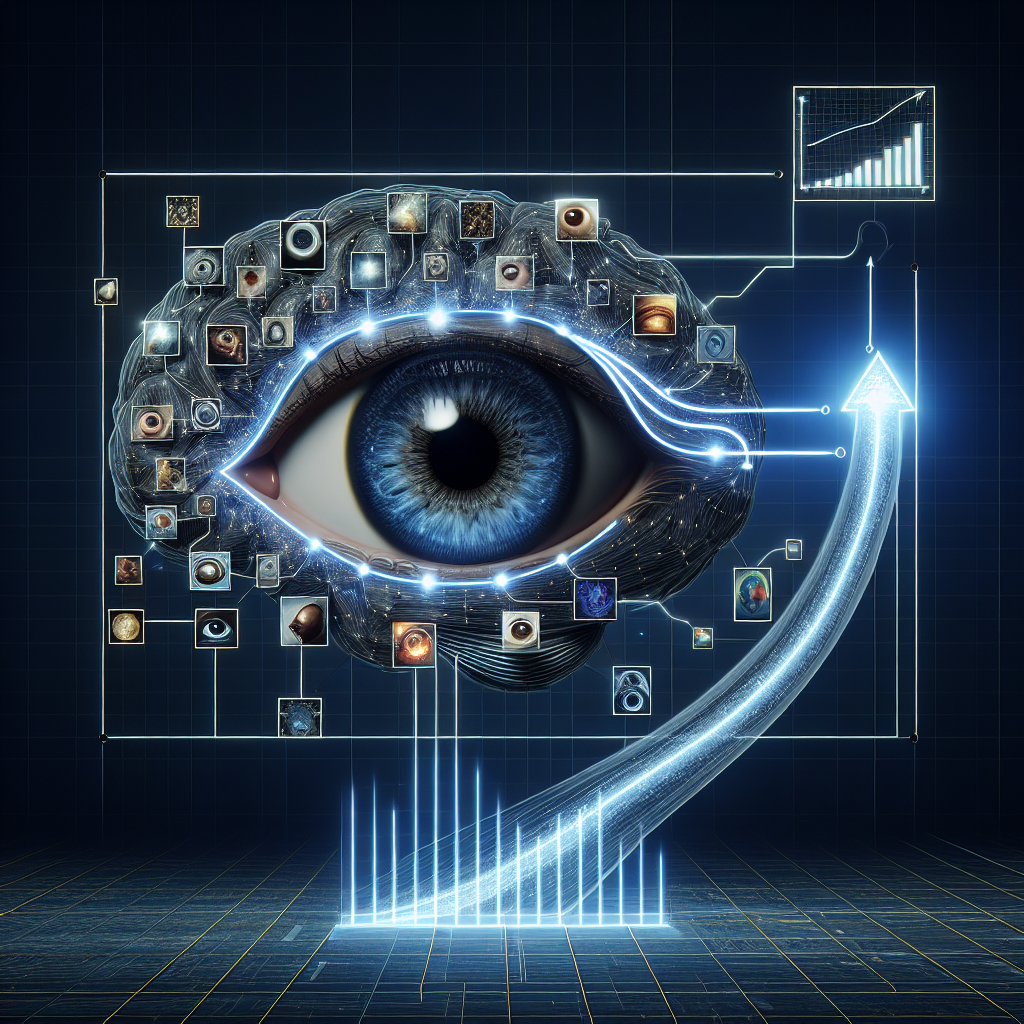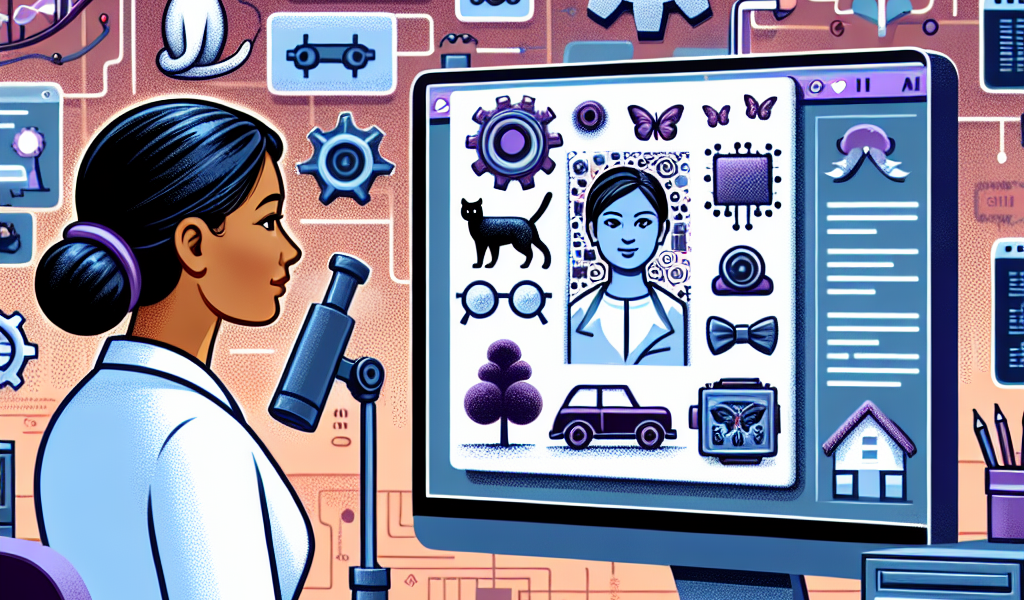-
Table of Contents
“Revolutionizing Vision: AI’s Leap in Image Recognition”
Introduction

Artificial Intelligence (AI) is revolutionizing the field of image recognition, transforming how machines interpret and understand visual data. By leveraging advanced algorithms and deep learning techniques, AI systems can now identify and classify objects, faces, and scenes with unprecedented accuracy and speed. This technological advancement is driven by the integration of neural networks, particularly convolutional neural networks (CNNs), which mimic the human brain’s ability to process visual information. As a result, AI-powered image recognition is being applied across various industries, from healthcare and security to retail and autonomous vehicles, enhancing efficiency, accuracy, and decision-making processes. The continuous improvement in AI models, fueled by vast datasets and computational power, promises even greater capabilities and applications in the near future.
Revolutionizing Healthcare: AI-Powered Image Recognition in Medical Diagnostics
Artificial intelligence (AI) is making significant strides in various fields, and one of the most transformative applications is in healthcare, particularly through AI-powered image recognition in medical diagnostics. This technology is revolutionizing the way medical professionals diagnose and treat diseases, offering unprecedented accuracy and efficiency. As we delve into this topic, it becomes clear that AI is not just a futuristic concept but a present-day reality that is reshaping the landscape of medical diagnostics.
To begin with, AI-powered image recognition systems are designed to analyze medical images such as X-rays, MRIs, and CT scans with remarkable precision. These systems use complex algorithms and deep learning techniques to identify patterns and anomalies that might be missed by the human eye. For instance, in the detection of tumors, AI can highlight areas of concern that radiologists might overlook, thereby facilitating early diagnosis and treatment. This capability is particularly crucial in the fight against cancer, where early detection can significantly improve patient outcomes.
Moreover, the integration of AI in medical diagnostics is not limited to cancer detection. It extends to a wide range of medical conditions, including cardiovascular diseases, neurological disorders, and even infectious diseases. For example, AI algorithms can analyze retinal images to detect signs of diabetic retinopathy, a condition that can lead to blindness if not treated promptly. Similarly, AI can assist in identifying early signs of Alzheimer’s disease by analyzing brain scans, thus enabling timely intervention.
Transitioning to the practical benefits, one of the most significant advantages of AI-powered image recognition is its ability to process vast amounts of data quickly and accurately. This efficiency is particularly beneficial in busy medical settings where time is of the essence. By automating the analysis of medical images, AI allows healthcare professionals to focus on patient care rather than spending hours scrutinizing images. This not only enhances productivity but also reduces the likelihood of human error, leading to more reliable diagnoses.
Furthermore, AI-powered image recognition systems are continually learning and improving. Through machine learning, these systems can be trained on extensive datasets, enabling them to recognize even the most subtle abnormalities. As more data is fed into these systems, their diagnostic accuracy continues to improve, making them invaluable tools in the medical field. This continuous learning process ensures that AI remains at the cutting edge of medical diagnostics, adapting to new challenges and evolving medical knowledge.
In addition to improving diagnostic accuracy and efficiency, AI-powered image recognition also holds promise for personalized medicine. By analyzing medical images alongside other patient data, AI can help tailor treatment plans to individual patients. This personalized approach can lead to more effective treatments and better patient outcomes, as it takes into account the unique characteristics of each patient.
While the benefits of AI-powered image recognition in medical diagnostics are undeniable, it is important to acknowledge the challenges and ethical considerations. Ensuring patient privacy and data security is paramount, as is addressing potential biases in AI algorithms. Nevertheless, with proper regulation and oversight, these challenges can be managed, allowing the full potential of AI to be realized in healthcare.
In conclusion, AI-powered image recognition is revolutionizing medical diagnostics, offering unparalleled accuracy, efficiency, and the potential for personalized medicine. As this technology continues to evolve, it promises to transform healthcare, making early diagnosis and effective treatment more accessible than ever before. The future of medical diagnostics is undoubtedly intertwined with the advancements in AI, heralding a new era of precision medicine.
Transforming Security: The Role of AI in Advanced Facial Recognition Systems
Artificial intelligence (AI) is revolutionizing various sectors, and one of the most significant areas of impact is image recognition. This technology, which allows computers to interpret and make decisions based on visual data, is transforming security through advanced facial recognition systems. As we delve into this topic, it becomes clear how AI is enhancing image recognition and, consequently, reshaping the landscape of security.
To begin with, AI-driven facial recognition systems have become more accurate and efficient over the years. Traditional image recognition relied heavily on manual coding and predefined algorithms, which often led to errors and limitations in identifying individuals. However, with the advent of machine learning and deep learning techniques, AI systems can now learn from vast datasets, improving their accuracy and reliability. This means that modern facial recognition systems can identify individuals with a high degree of precision, even in challenging conditions such as poor lighting or low-resolution images.
Moreover, the integration of AI in facial recognition has significantly accelerated the processing speed. In the past, analyzing and matching faces against a database could take considerable time, making real-time applications impractical. Today, AI algorithms can process and compare images almost instantaneously, enabling real-time identification and verification. This capability is particularly crucial in security scenarios where timely responses are essential, such as in airports, public events, and law enforcement operations.
In addition to speed and accuracy, AI enhances the adaptability of facial recognition systems. Traditional systems often struggled with variations in facial expressions, aging, or changes in appearance due to accessories like glasses or hats. AI, however, can be trained to recognize and adapt to these variations, making the systems more robust and versatile. This adaptability ensures that security measures remain effective even as individuals’ appearances change over time.
Furthermore, AI-powered facial recognition systems are playing a pivotal role in enhancing public safety. For instance, these systems are being deployed in surveillance cameras to monitor and identify potential threats in real-time. By analyzing video feeds, AI can detect suspicious activities or recognize individuals on watchlists, alerting authorities promptly. This proactive approach not only helps in preventing crimes but also aids in swift investigations, thereby improving overall security.
Another significant advantage of AI in facial recognition is its potential to reduce human biases. Human operators can inadvertently introduce biases based on their perceptions and experiences, leading to errors or unfair treatment. AI systems, when properly trained on diverse datasets, can minimize these biases, ensuring more equitable and accurate identification processes. This aspect is particularly important in law enforcement and border control, where impartiality is crucial.
However, the deployment of AI in facial recognition is not without its challenges. Privacy concerns and ethical considerations are at the forefront of the debate. The ability to track and identify individuals in public spaces raises questions about surveillance and the potential for misuse. It is essential for policymakers and technology developers to address these concerns by implementing robust regulations and ensuring transparency in the use of AI-powered facial recognition systems.
In conclusion, AI is significantly enhancing image recognition, particularly in the realm of facial recognition systems. The improvements in accuracy, speed, adaptability, and bias reduction are transforming security measures, making them more effective and reliable. As we continue to navigate the complexities of this technology, it is crucial to balance the benefits with ethical considerations, ensuring that AI-driven advancements contribute positively to society.
Enhancing Retail: How AI Image Recognition Is Changing Online Shopping Experiences
Artificial intelligence (AI) is revolutionizing various industries, and the retail sector is no exception. One of the most transformative applications of AI in retail is image recognition technology, which is significantly enhancing online shopping experiences. This technology is not only making it easier for consumers to find what they are looking for but also helping retailers optimize their operations and improve customer satisfaction.
To begin with, AI-powered image recognition allows online shoppers to search for products using images rather than text. This visual search capability is particularly beneficial for consumers who may not know the exact name or description of the item they are seeking. For instance, a shopper can simply upload a photo of a dress they saw on social media, and the AI system will analyze the image to find similar products available for purchase. This seamless integration of visual search into e-commerce platforms is making the shopping experience more intuitive and user-friendly.
Moreover, image recognition technology is enhancing product recommendations. Traditional recommendation systems rely heavily on text-based data, such as product descriptions and customer reviews. However, these systems often fall short in capturing the visual appeal of products, which is a crucial factor in purchasing decisions. By analyzing images, AI can better understand the visual attributes of products, such as color, pattern, and style, and provide more accurate and personalized recommendations. This not only helps consumers discover new items that match their preferences but also increases the likelihood of purchase, thereby boosting sales for retailers.
In addition to improving search and recommendations, AI image recognition is also streamlining inventory management. Retailers can use this technology to automatically tag and categorize products based on their visual characteristics. This reduces the need for manual data entry and minimizes errors, leading to more efficient inventory tracking and management. Furthermore, AI can monitor product images on e-commerce websites to ensure that they are up-to-date and accurately represent the items being sold. This helps maintain consistency and trust, which are essential for a positive online shopping experience.
Another significant advantage of AI image recognition in retail is its ability to detect counterfeit products. Counterfeiting is a major issue in the e-commerce industry, leading to significant financial losses and damage to brand reputation. AI systems can analyze product images to identify subtle differences between genuine and fake items, helping retailers and consumers avoid counterfeit goods. This not only protects the integrity of brands but also ensures that customers receive authentic products.
Additionally, AI image recognition is enhancing customer service in online shopping. Virtual try-on features, powered by AI, allow shoppers to see how clothes, accessories, or even makeup will look on them before making a purchase. By using augmented reality (AR) and image recognition, these tools create a more interactive and engaging shopping experience. This reduces the uncertainty associated with online purchases and decreases the likelihood of returns, benefiting both consumers and retailers.
In conclusion, AI image recognition is playing a pivotal role in transforming online shopping experiences. By enabling visual search, improving product recommendations, streamlining inventory management, detecting counterfeit products, and enhancing customer service, this technology is making online shopping more efficient, personalized, and enjoyable. As AI continues to advance, we can expect even more innovative applications that will further revolutionize the retail industry, ultimately benefiting both consumers and retailers alike.
Conclusion
AI is significantly enhancing image recognition by leveraging advanced machine learning algorithms, particularly deep learning techniques such as convolutional neural networks (CNNs). These technologies enable more accurate and efficient identification and classification of objects within images. AI-driven image recognition systems are now capable of understanding complex visual data, improving applications in various fields such as healthcare, security, and autonomous driving. The continuous evolution of AI models and the increasing availability of large datasets are further propelling the accuracy and reliability of image recognition, making it an indispensable tool in modern technology.





